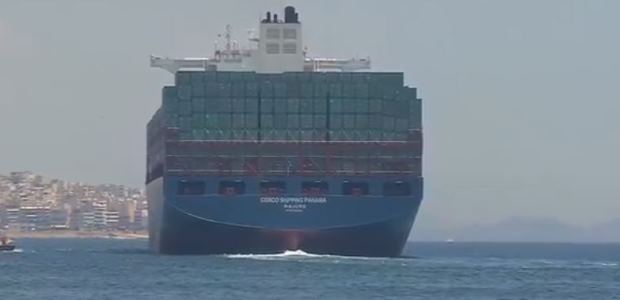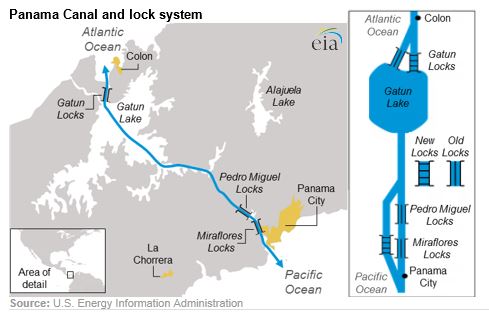
Panama Finally Opens Expanded Canal
Called a "risky bet" by The New York Times because of questions about the design and whether enough steel and concrete are in its new locks, it is a colossal bet by the country of Panama. The COSCO Shipping Panama, a Chinese container ship, made the first transit of the new canal June 26.
A colossal gamble by the Panama Canal Authority and the country of Panama, the expanded Panama Canal opens to commercial ship traffic on June 27. The project took nine years to complete and has cost $5.4 billion -- although an investigative article by The New York Times reported at least $3.4 billion in disputed costs arose during it.
This is the first expansion of the canal since it was completed in 1914. The older lock system has two lanes of side-by-side traffic, while the new locks provide one large lane and allow four transits per day. The older lock system will continue to be used.
The first ship to transit the expanded canal was the COSCO Shipping Panama, a Chinese container ship that was scheduled to make the trip on June 26.
 There are questions about whether the new locks are big enough for both the canal's new tugboats and the giant Neopanamax ships the expansion is designed to accommodate, according to The Times' analysis, which reported the low winning bid for the project included a budget for concrete that was 71 percent smaller than the next lowest bidder's concrete budget and that the winner's budget for steel to reinforce the concrete was "roughly 25 percent less."
There are questions about whether the new locks are big enough for both the canal's new tugboats and the giant Neopanamax ships the expansion is designed to accommodate, according to The Times' analysis, which reported the low winning bid for the project included a budget for concrete that was 71 percent smaller than the next lowest bidder's concrete budget and that the winner's budget for steel to reinforce the concrete was "roughly 25 percent less."
The project's success may be undercut by a slowdown in global trade, especially trade from China -- cargo traffic between ports on the U.S. East Coast and northern Asia ports declined by 10.2 percent in 2015, and lower oil prices are allowing some shipping lines to use longer routes, AP reported. But its report quoted Jorge Luis Quijano, the Canal Authority's administrator, as saying the shipping market is cyclical and he is confident the volumes will rebound.
Even though Neopanamax ships can carry far more than the Panamax ships that travel through the original canal, the expanded canal is unlikely to significantly change crude oil and petroleum product flows, except for U.S. propane exports, the U.S. Energy Information Administration (EIA) predicted last week.
Panamax vessels can carry 300,000 to 500,000 barrels of capacity of petroleum products such as gasoline and diesel fuel. Neopanamax ships have estimated capacities of 400,000 to 600,000 barrels, according to EIA.
Maersk, the global shipping company based in Copenhagen, Denmark, praised the project, saying the expansion of the Panama Canal "represents the largest project at the Canal since its construction 102 years ago and shows the Panama Canal Authority's commitment to enhancing global trade by accommodating larger vessels." Maersk has about 88,000 employees and reported $40 billion in 2015 revenue.